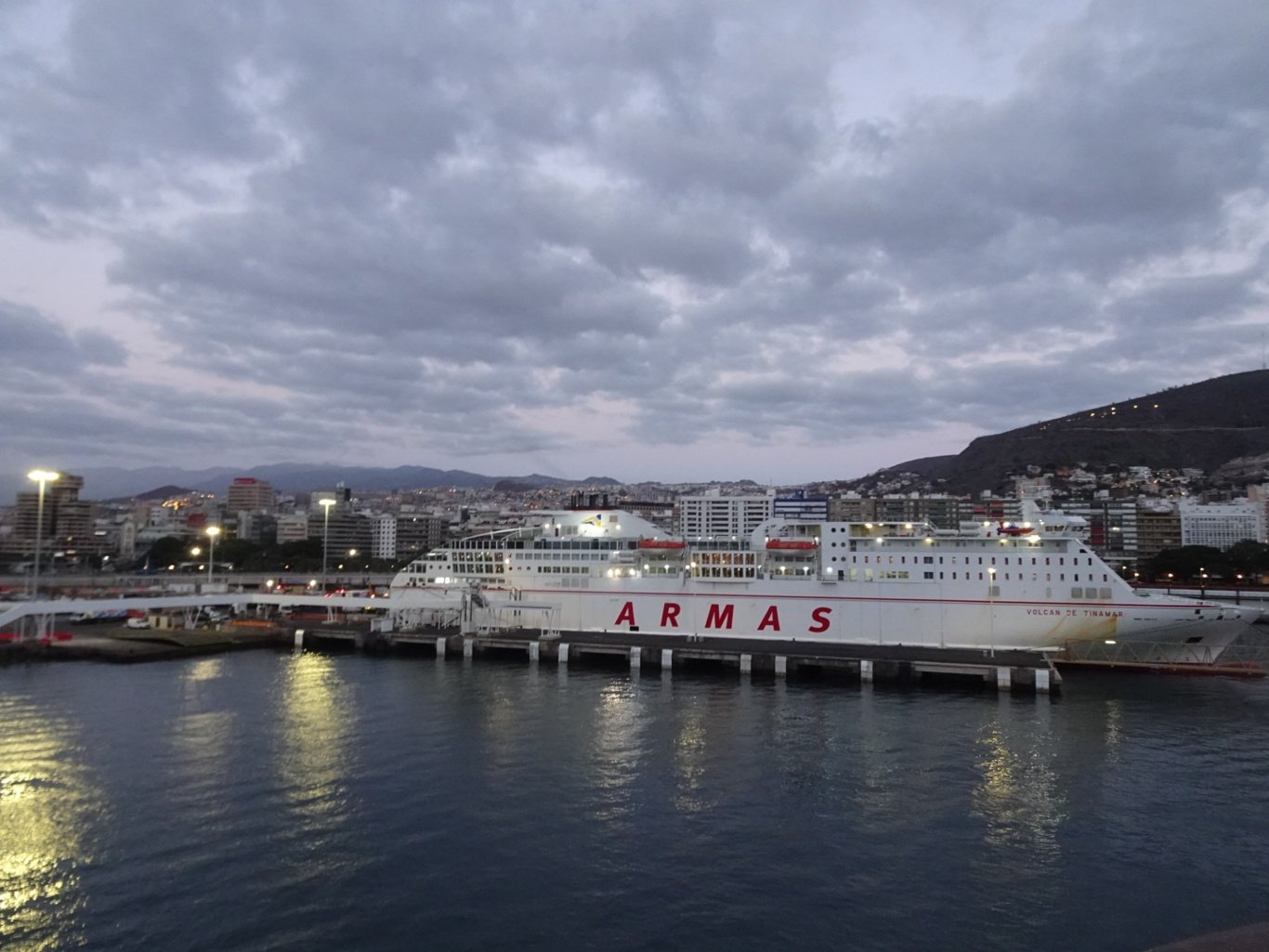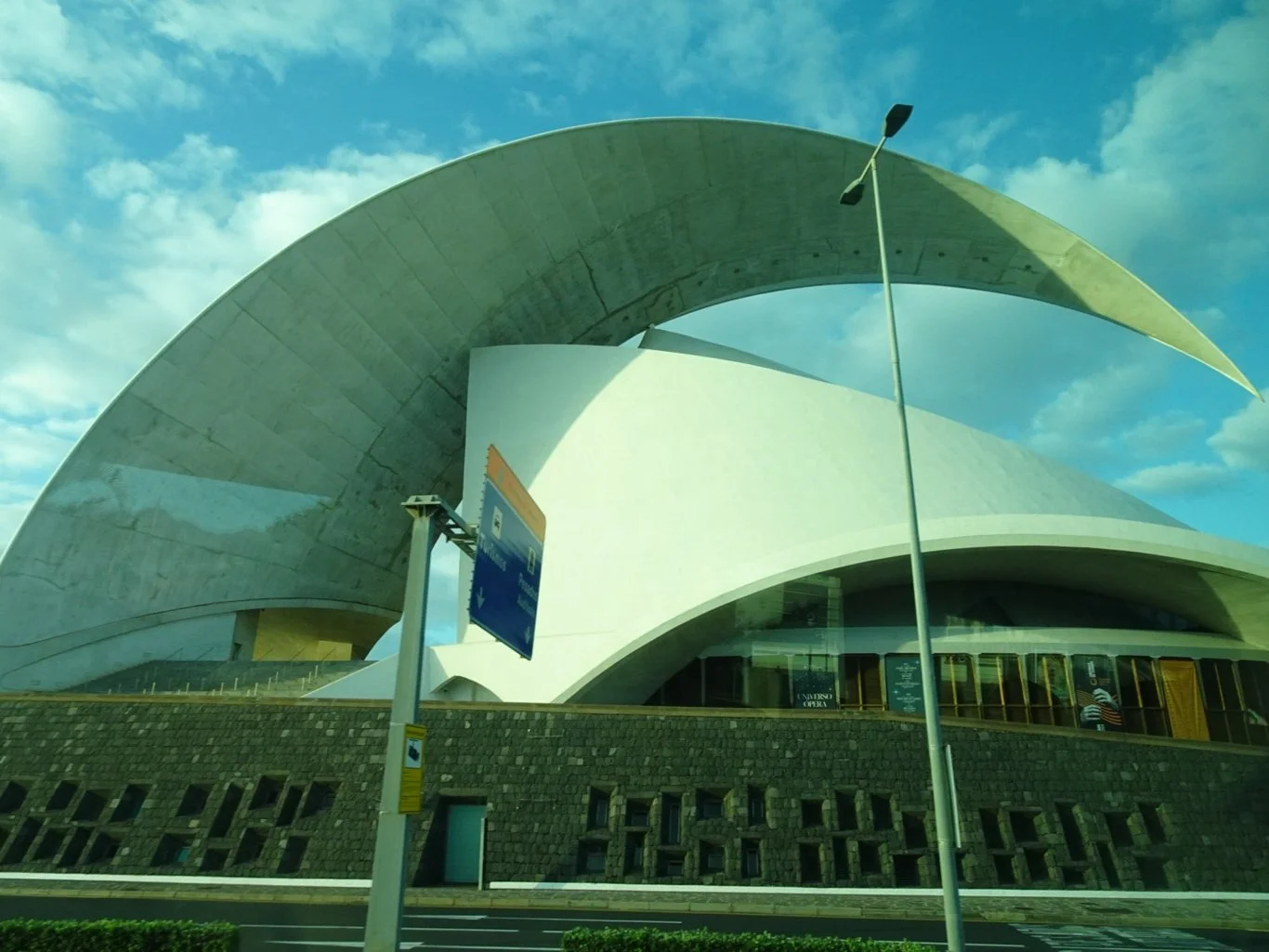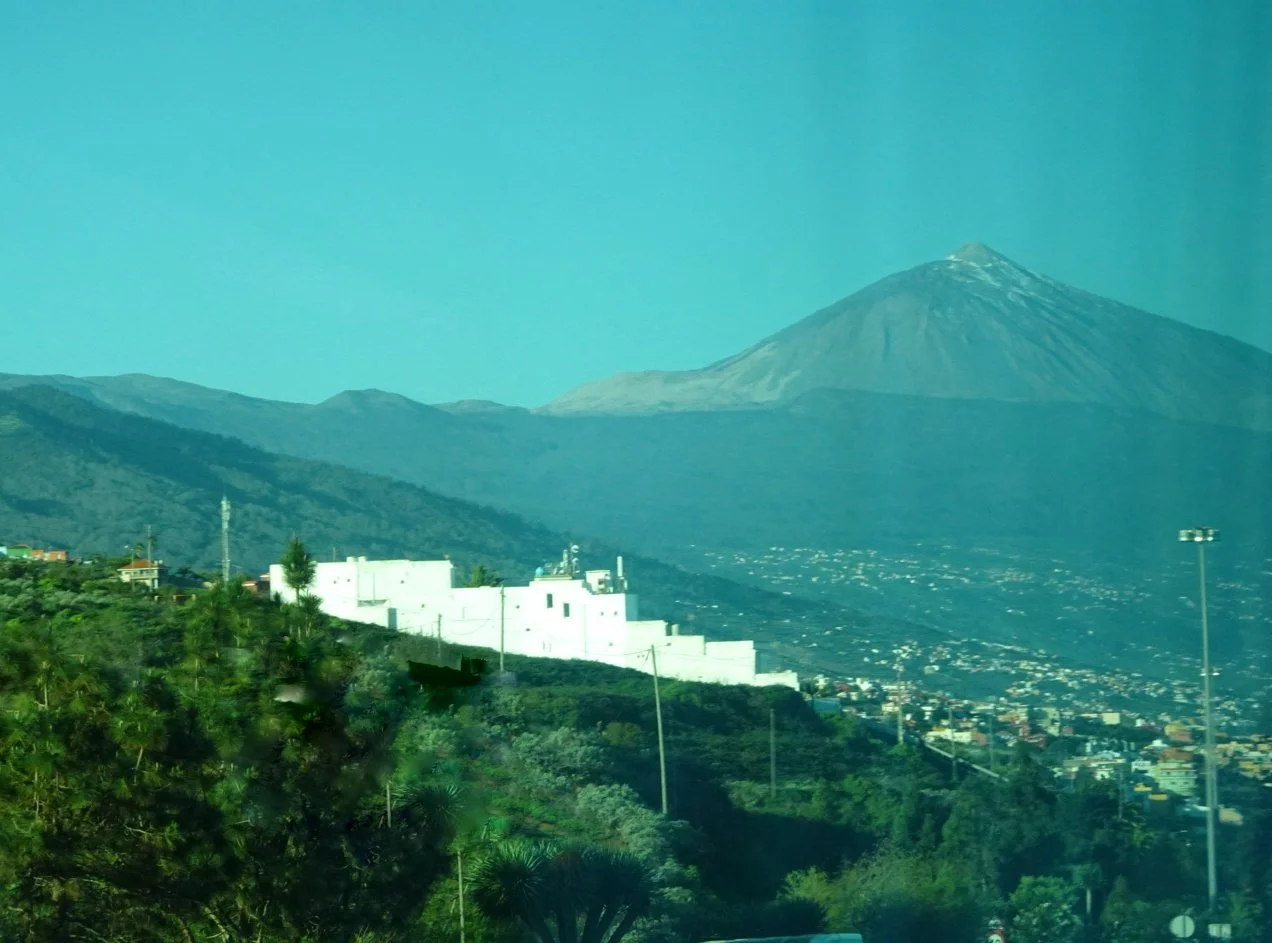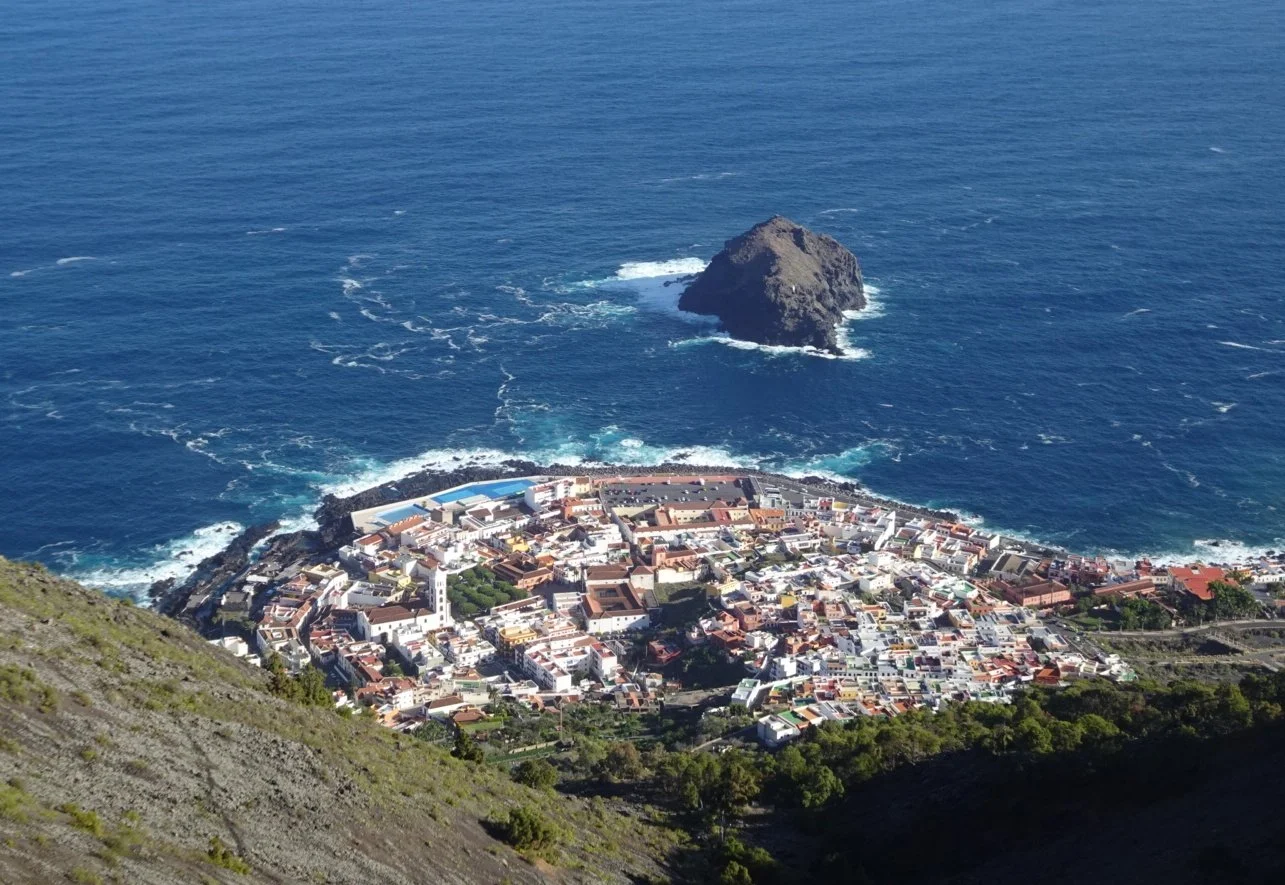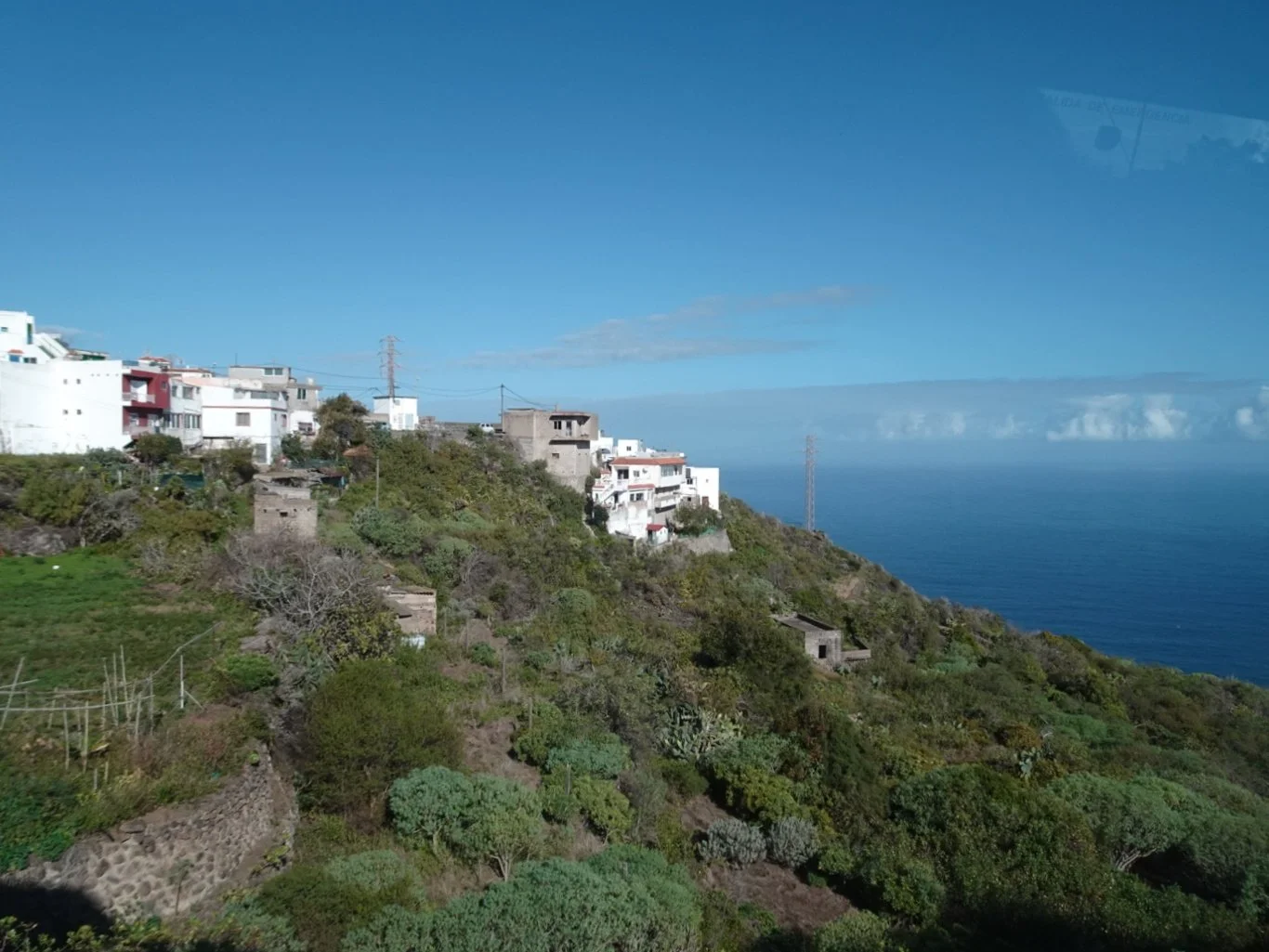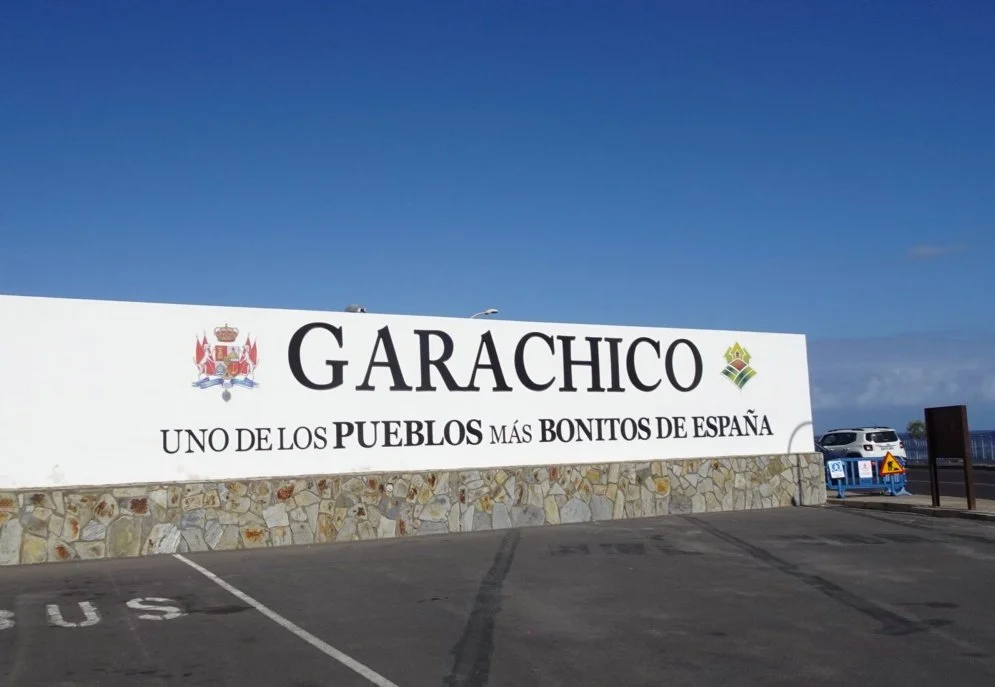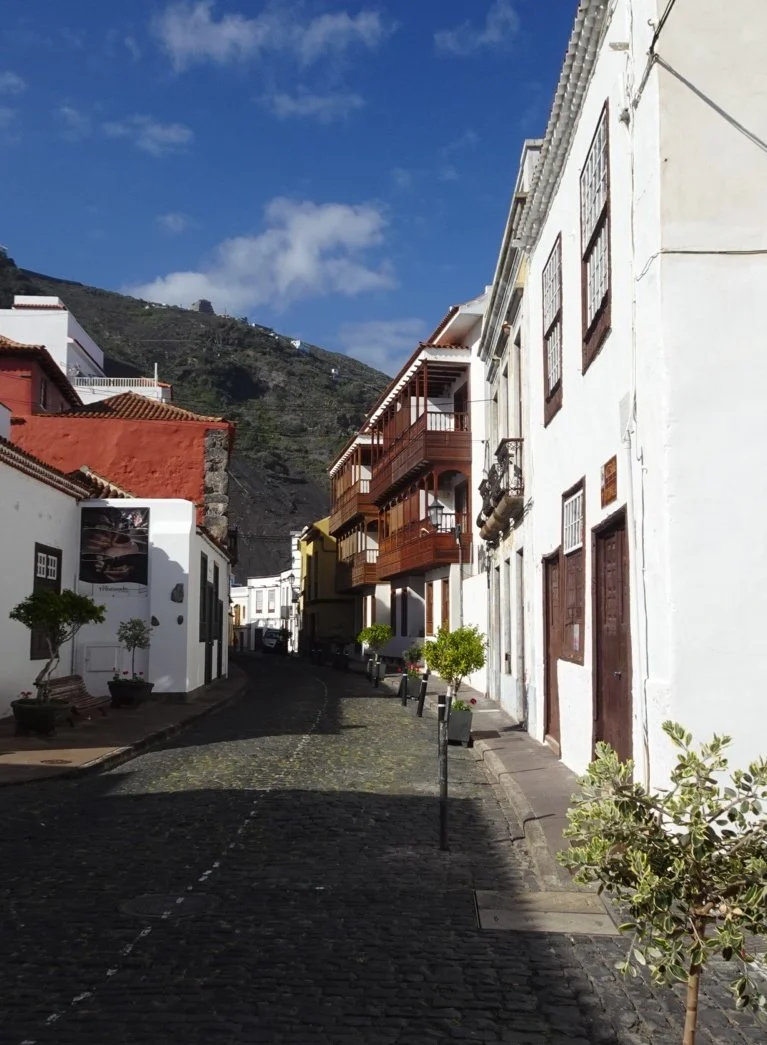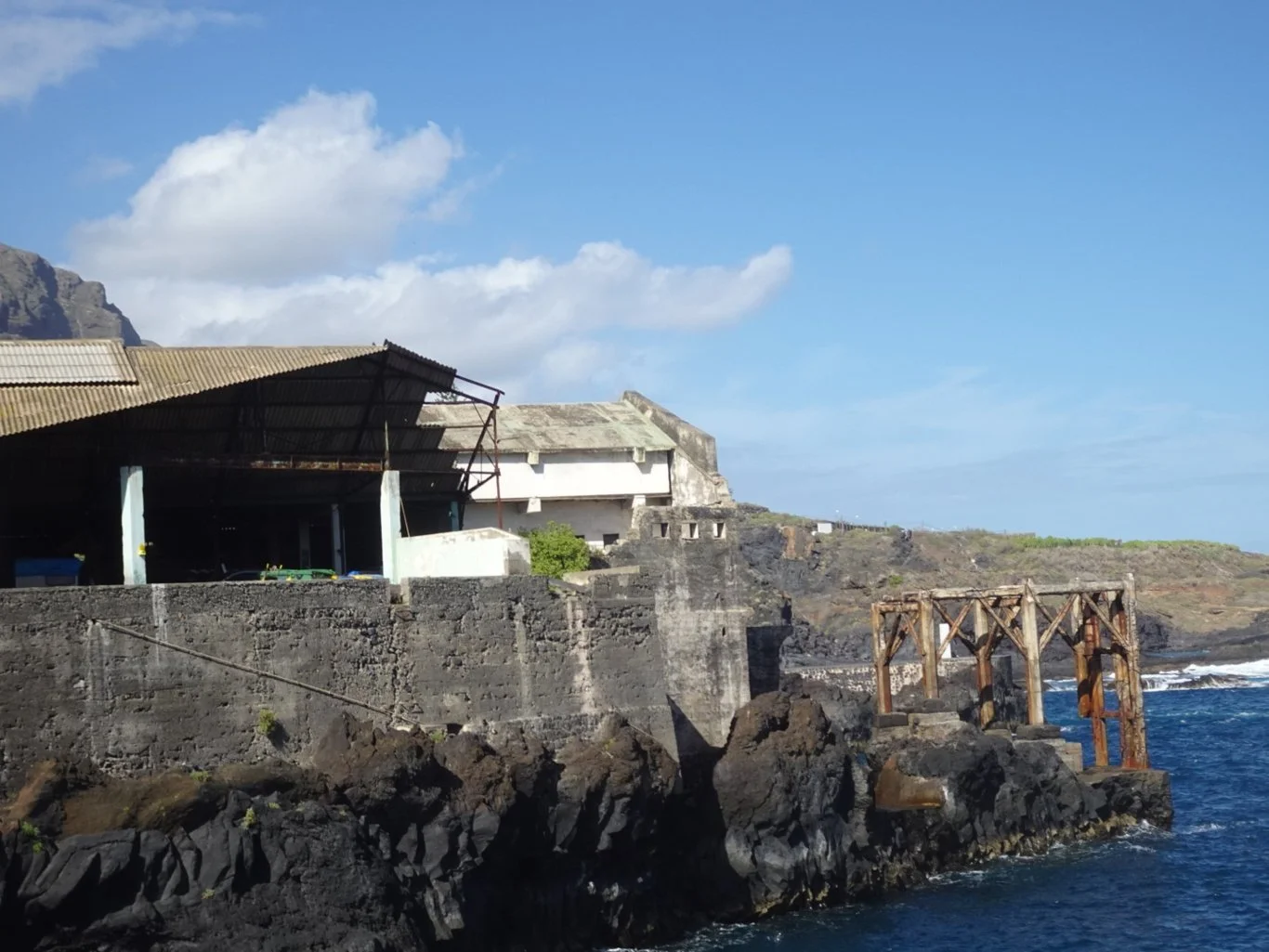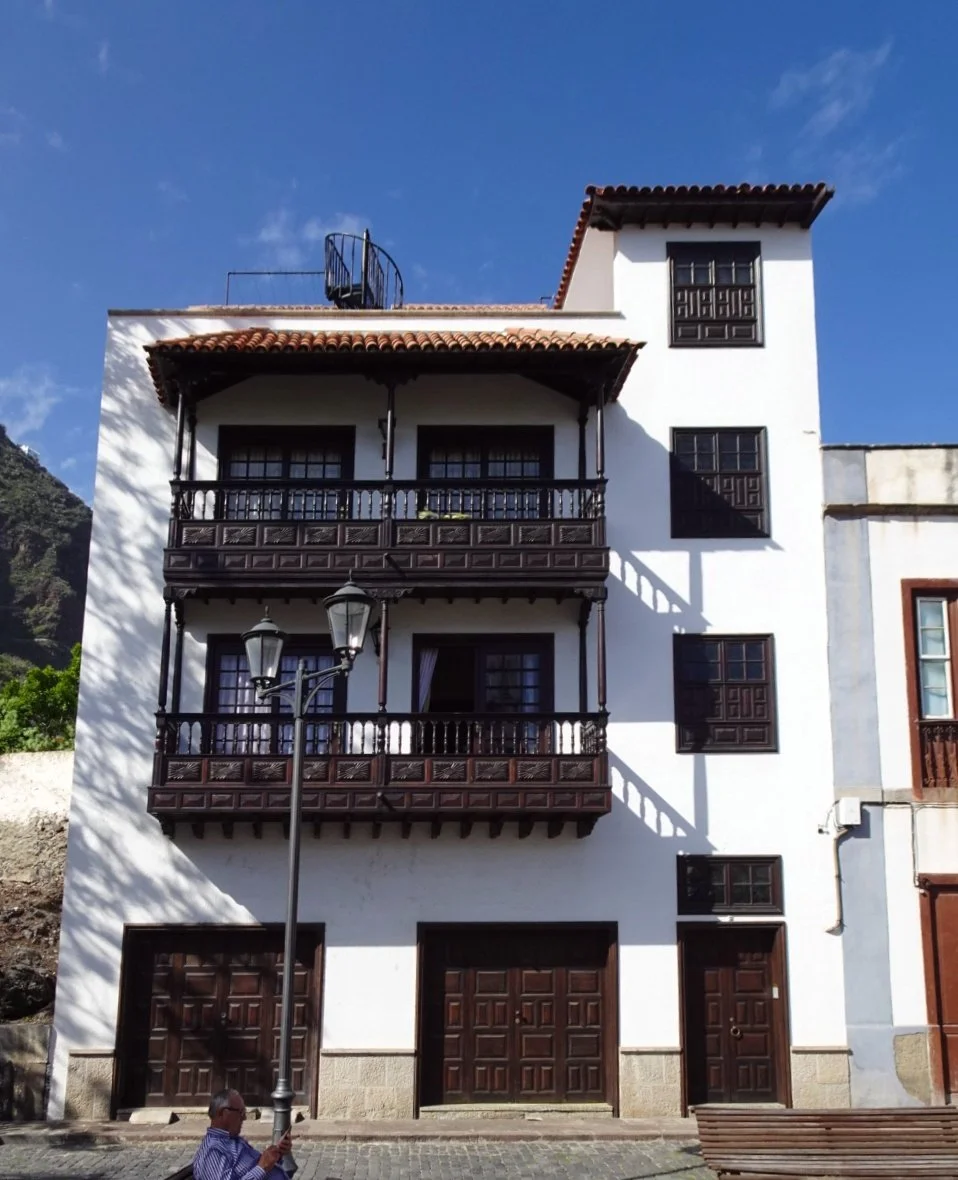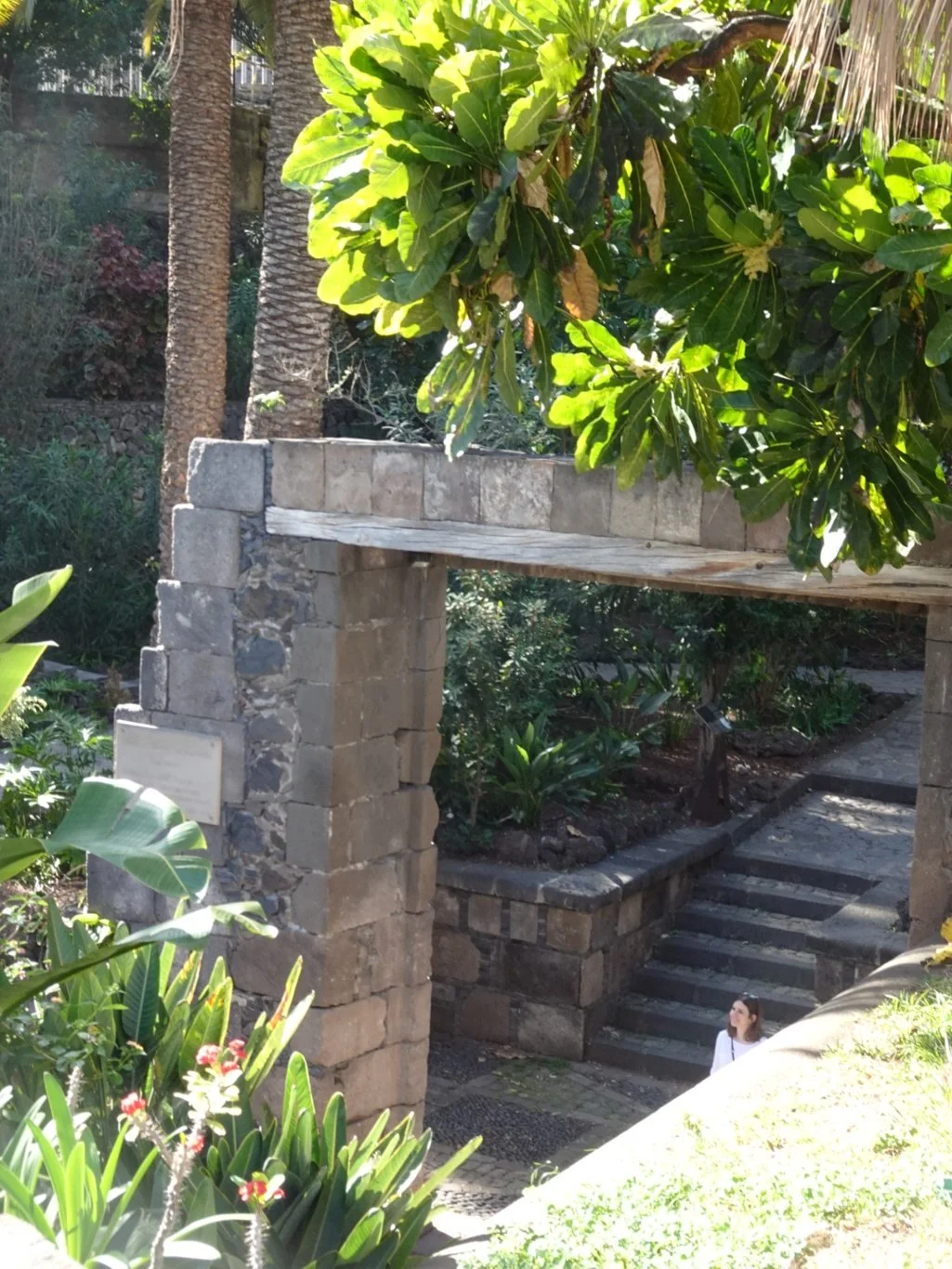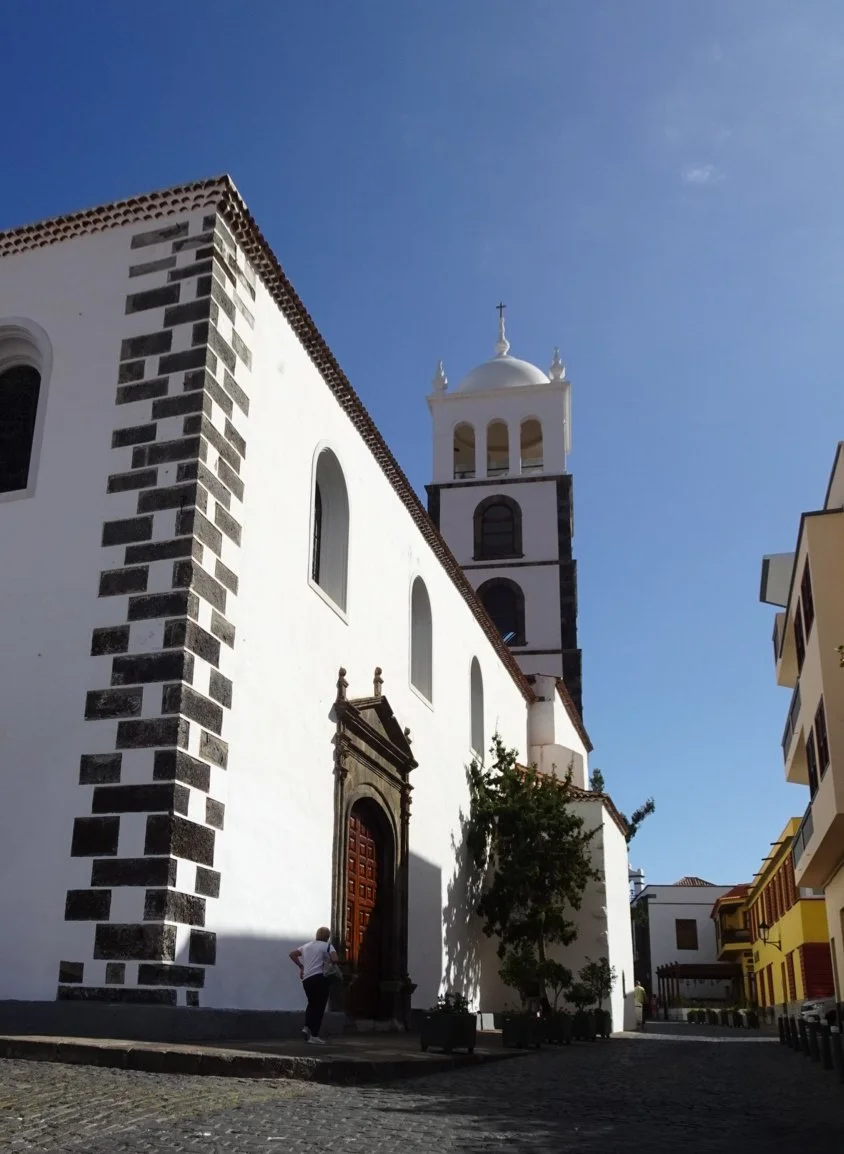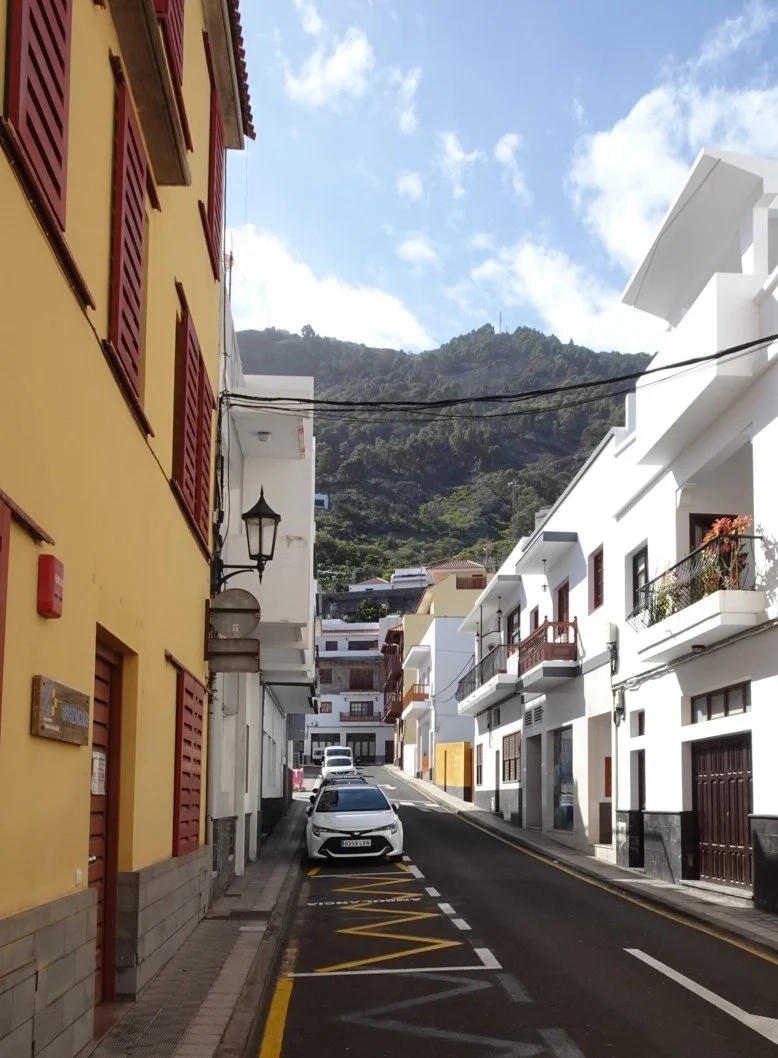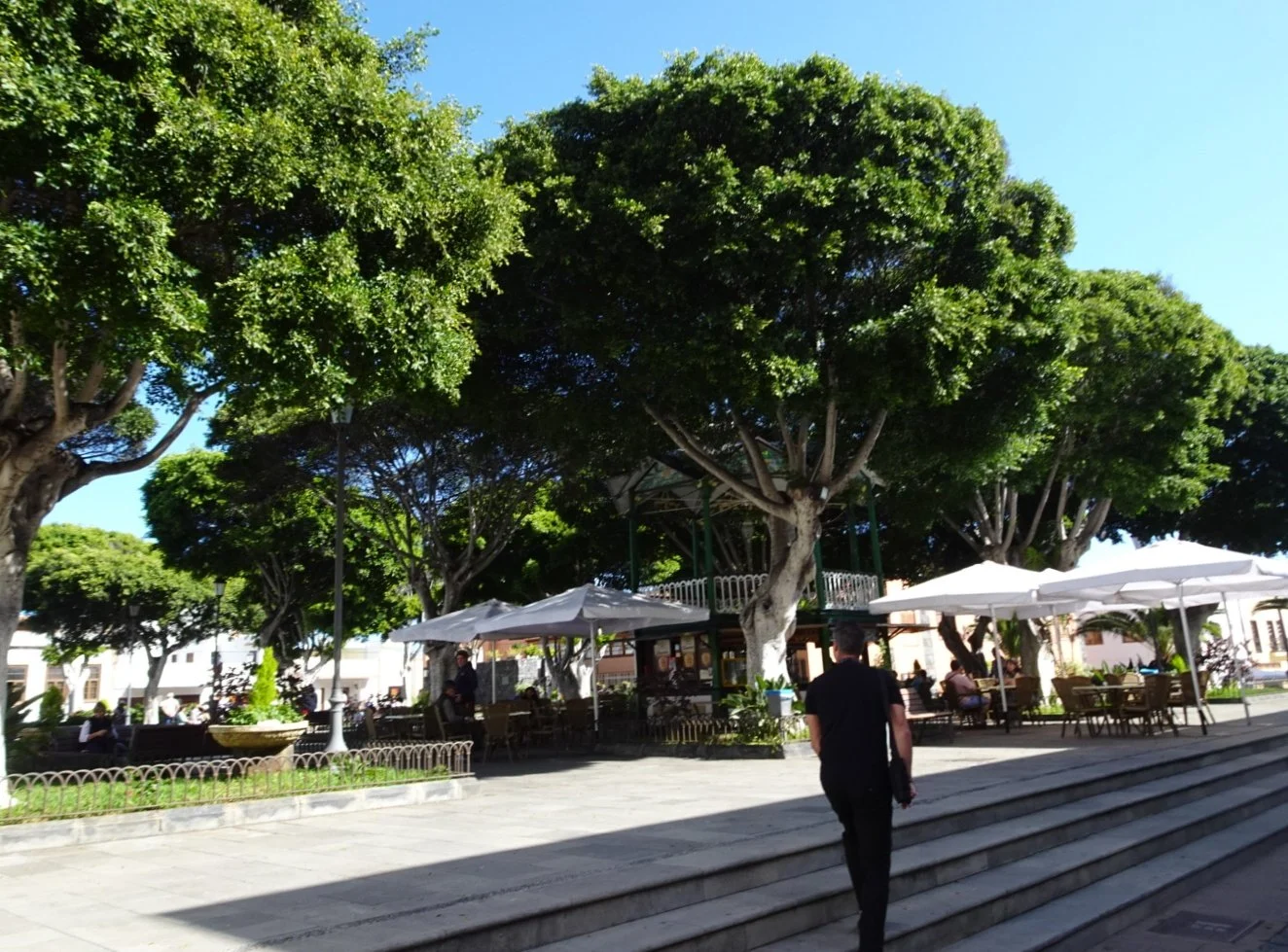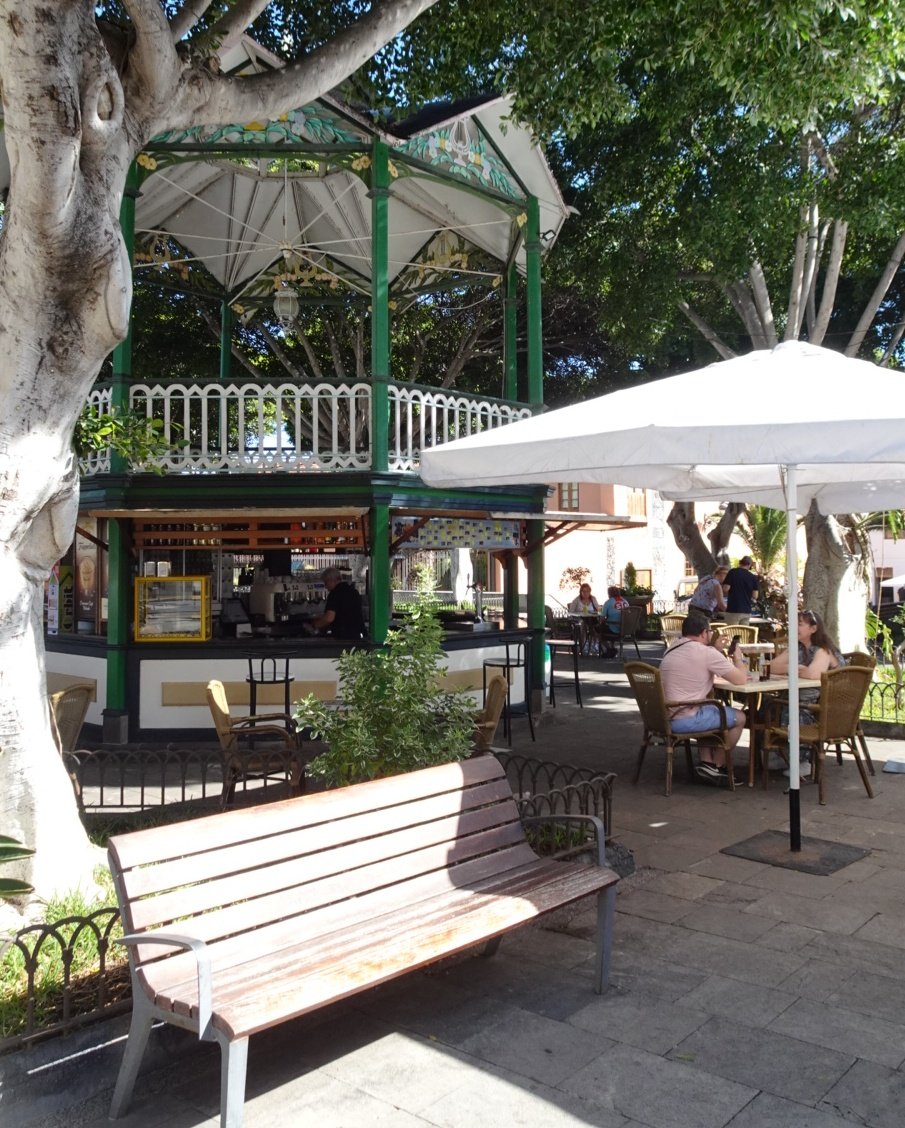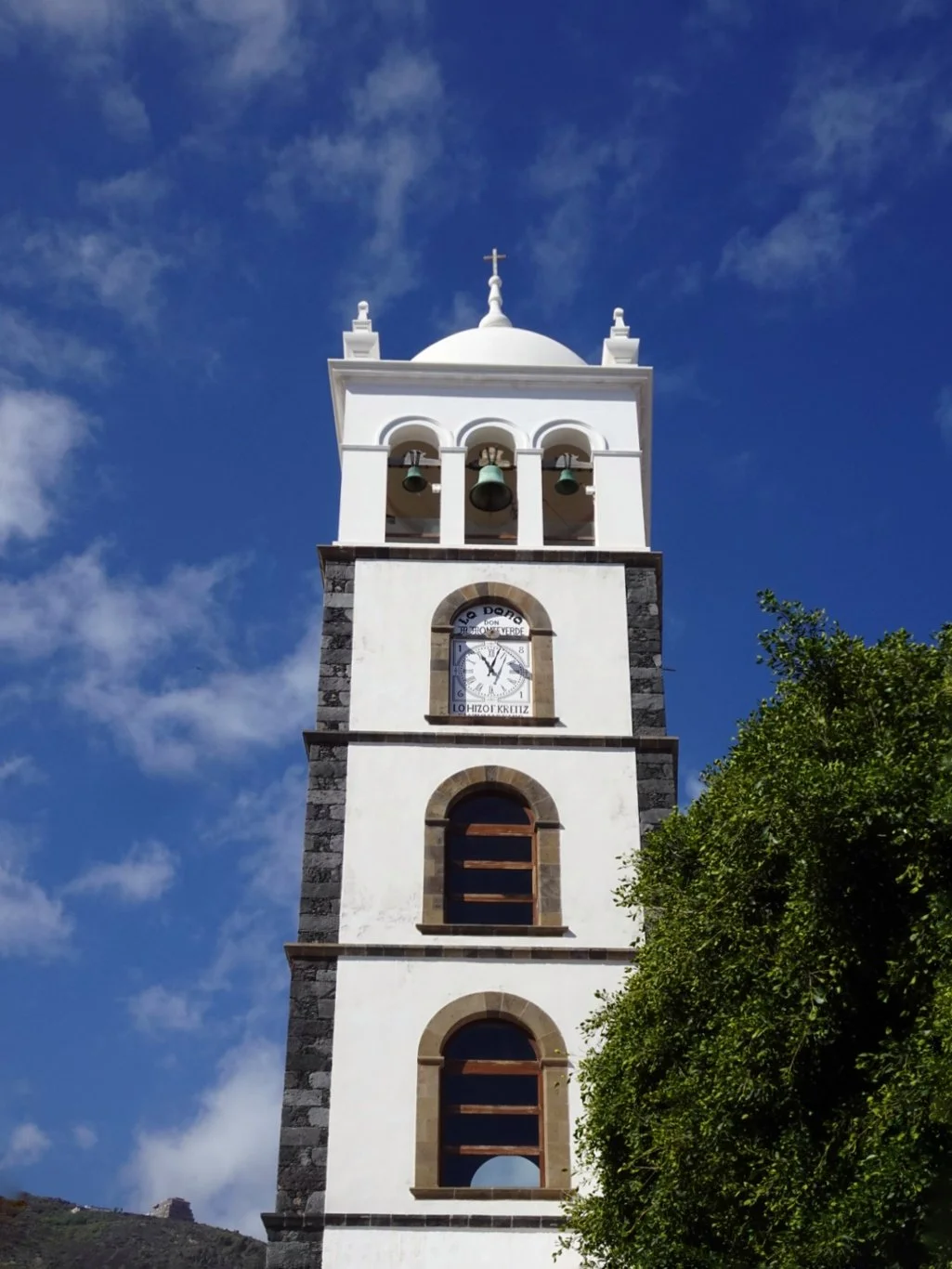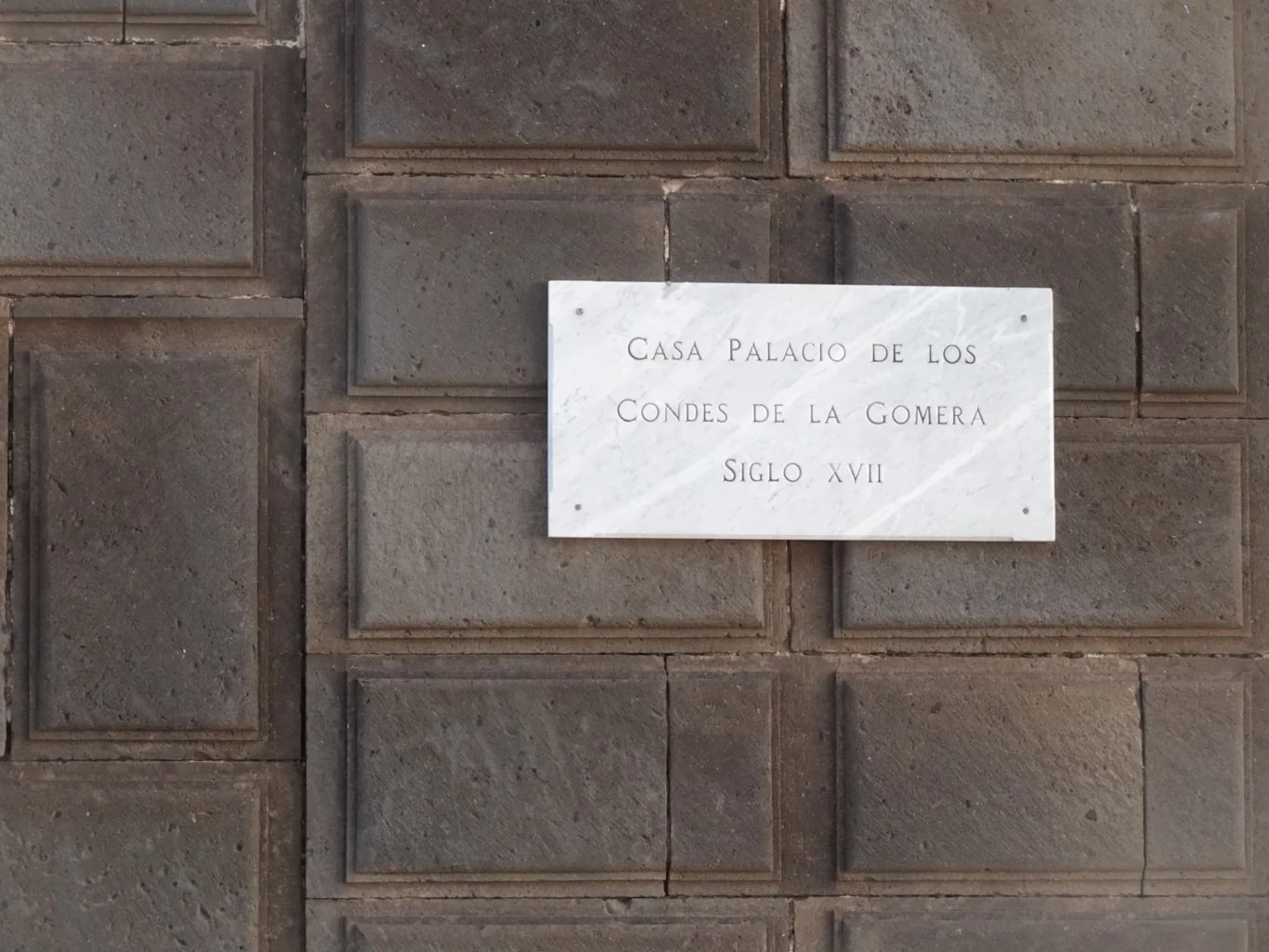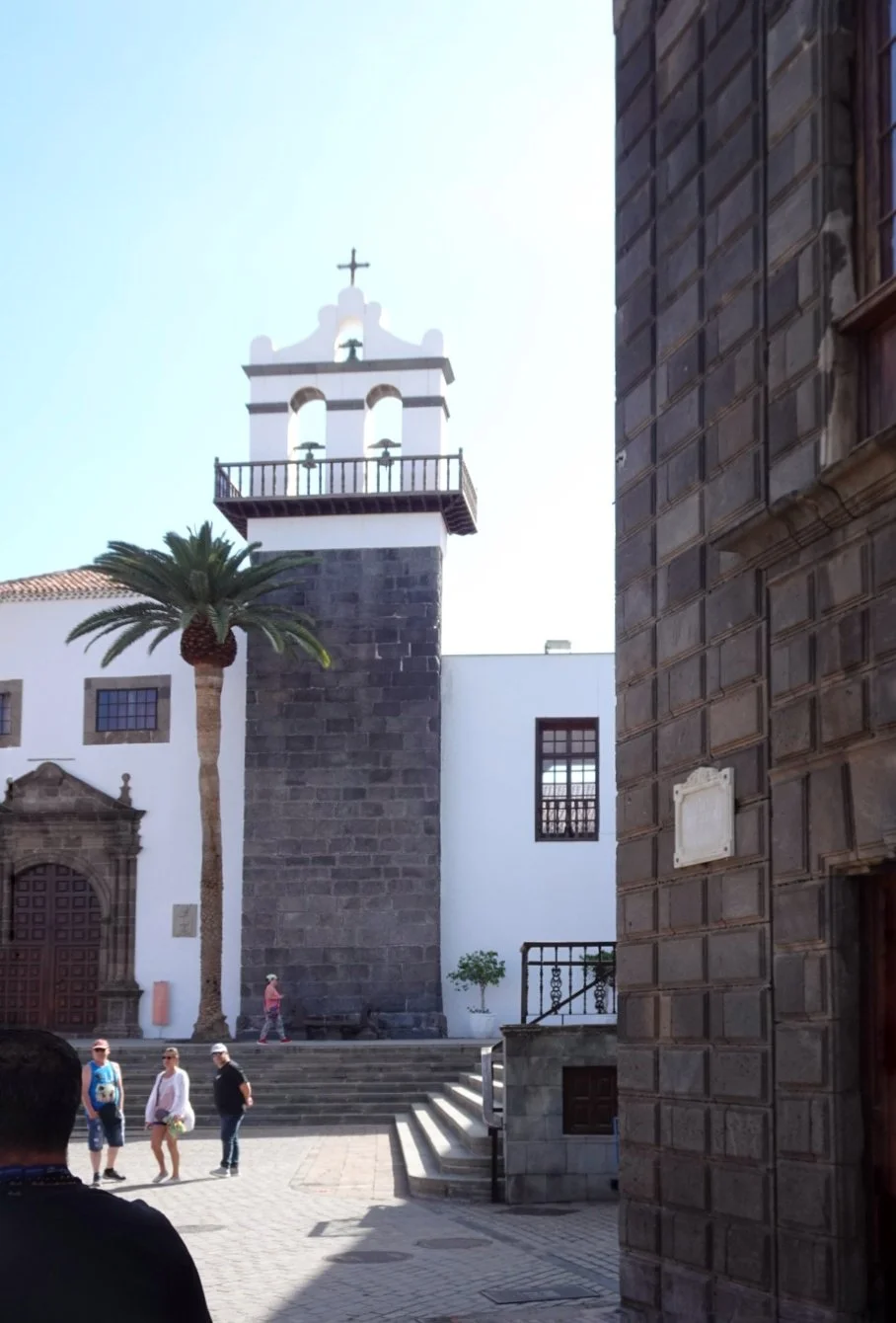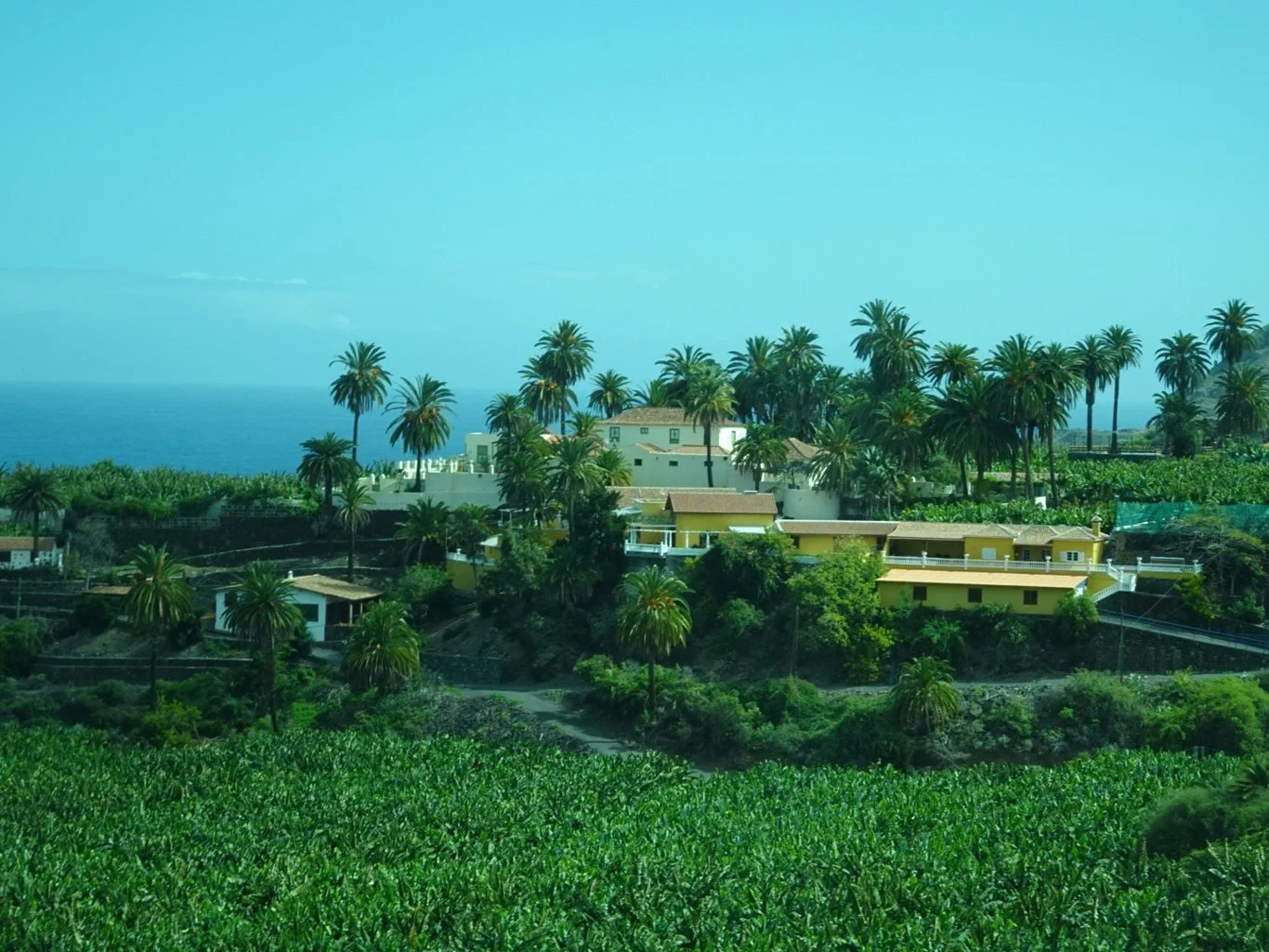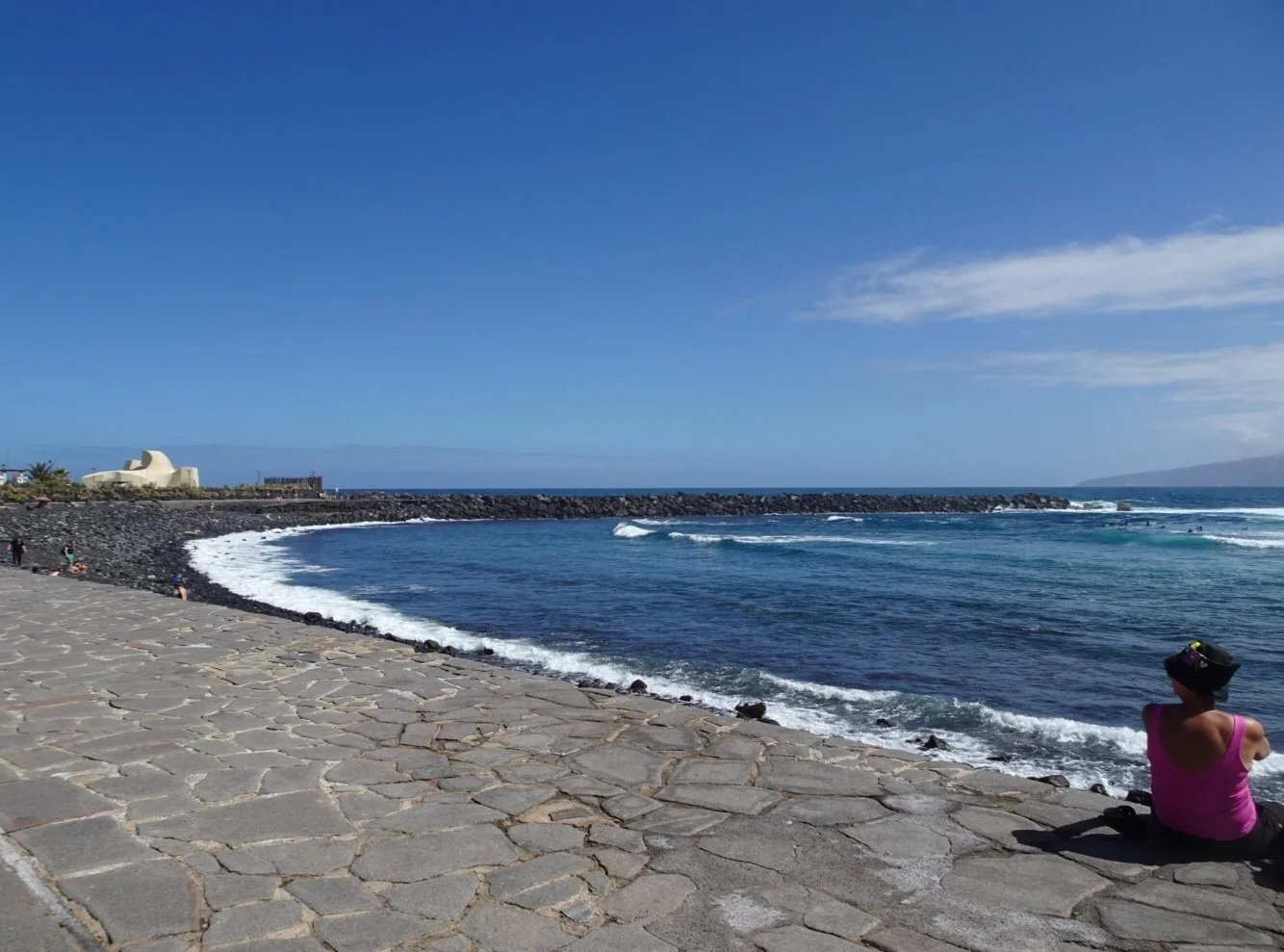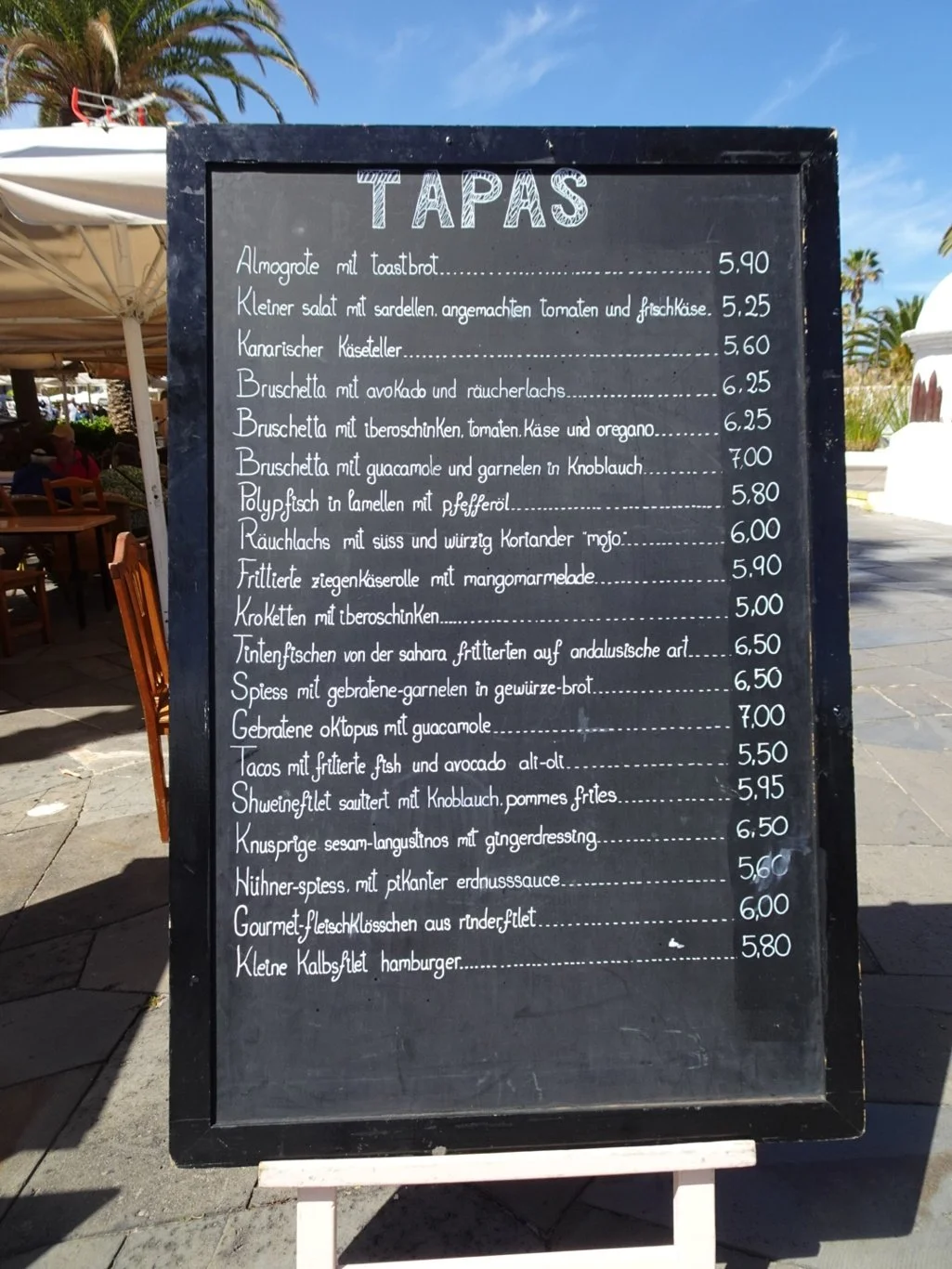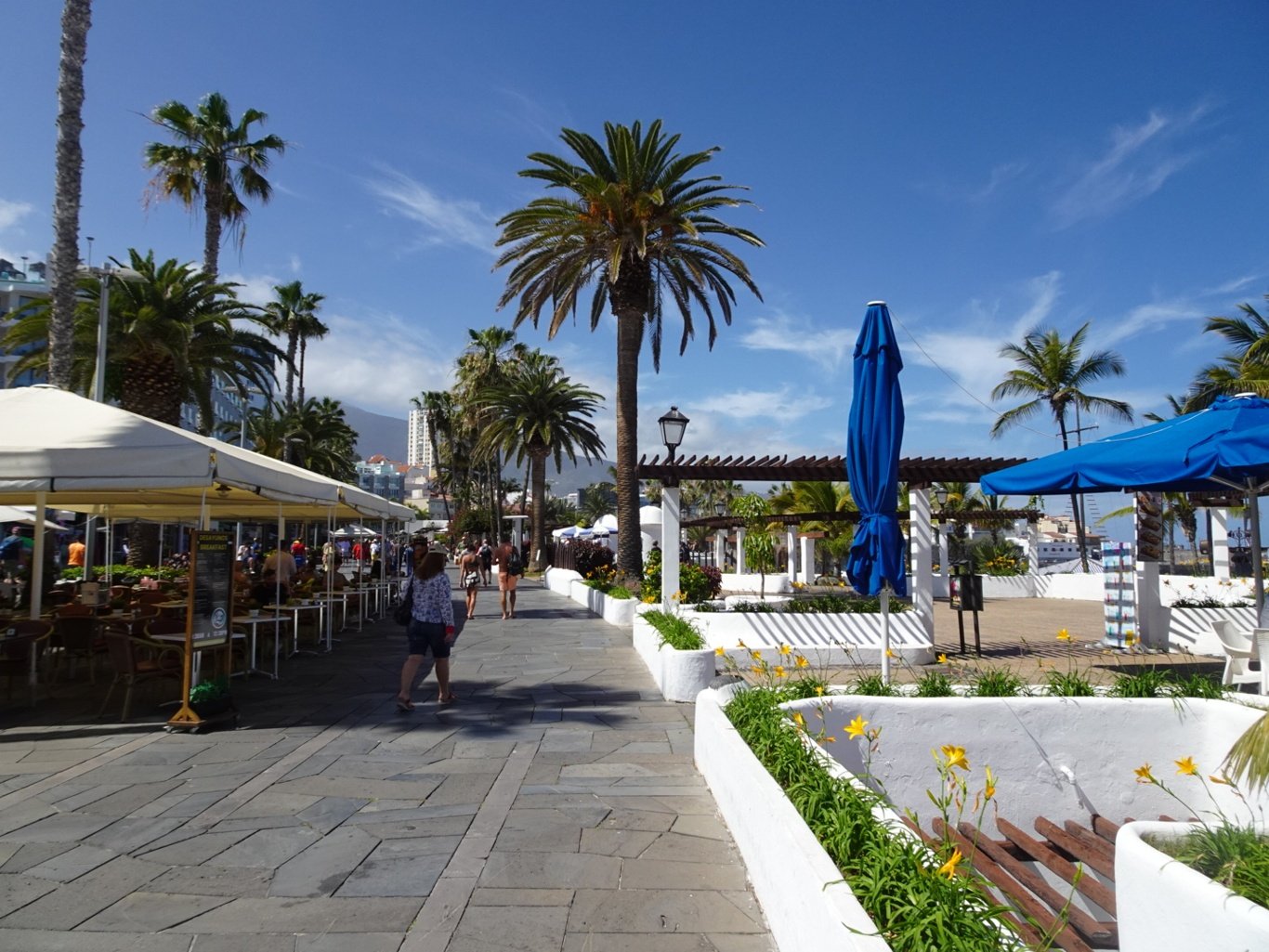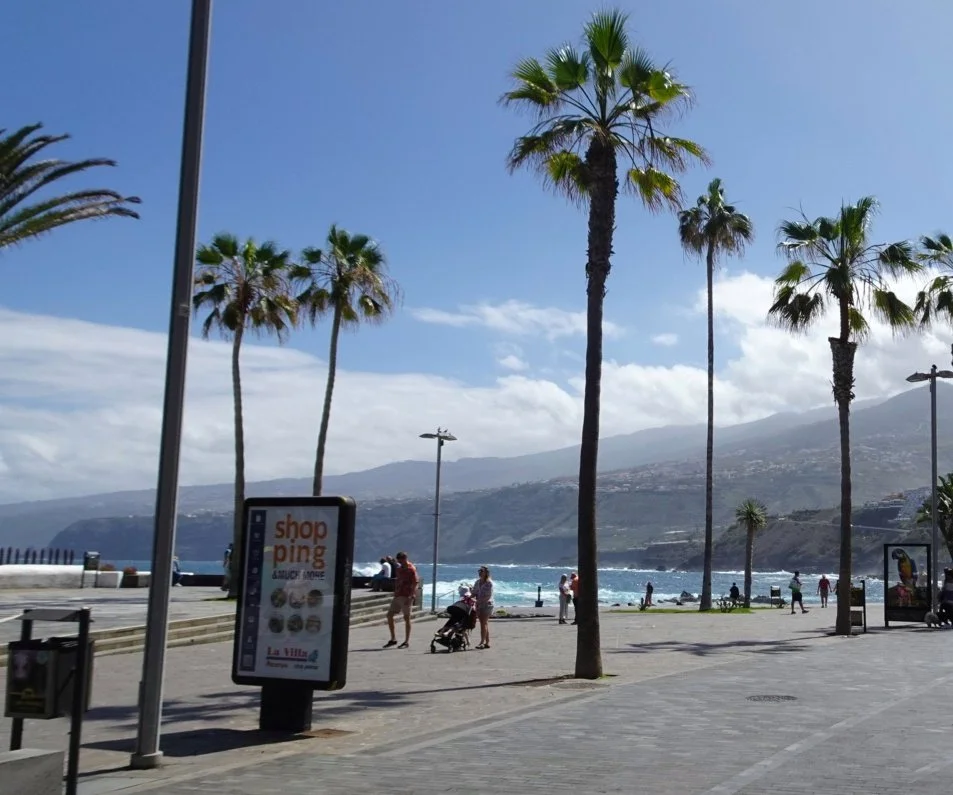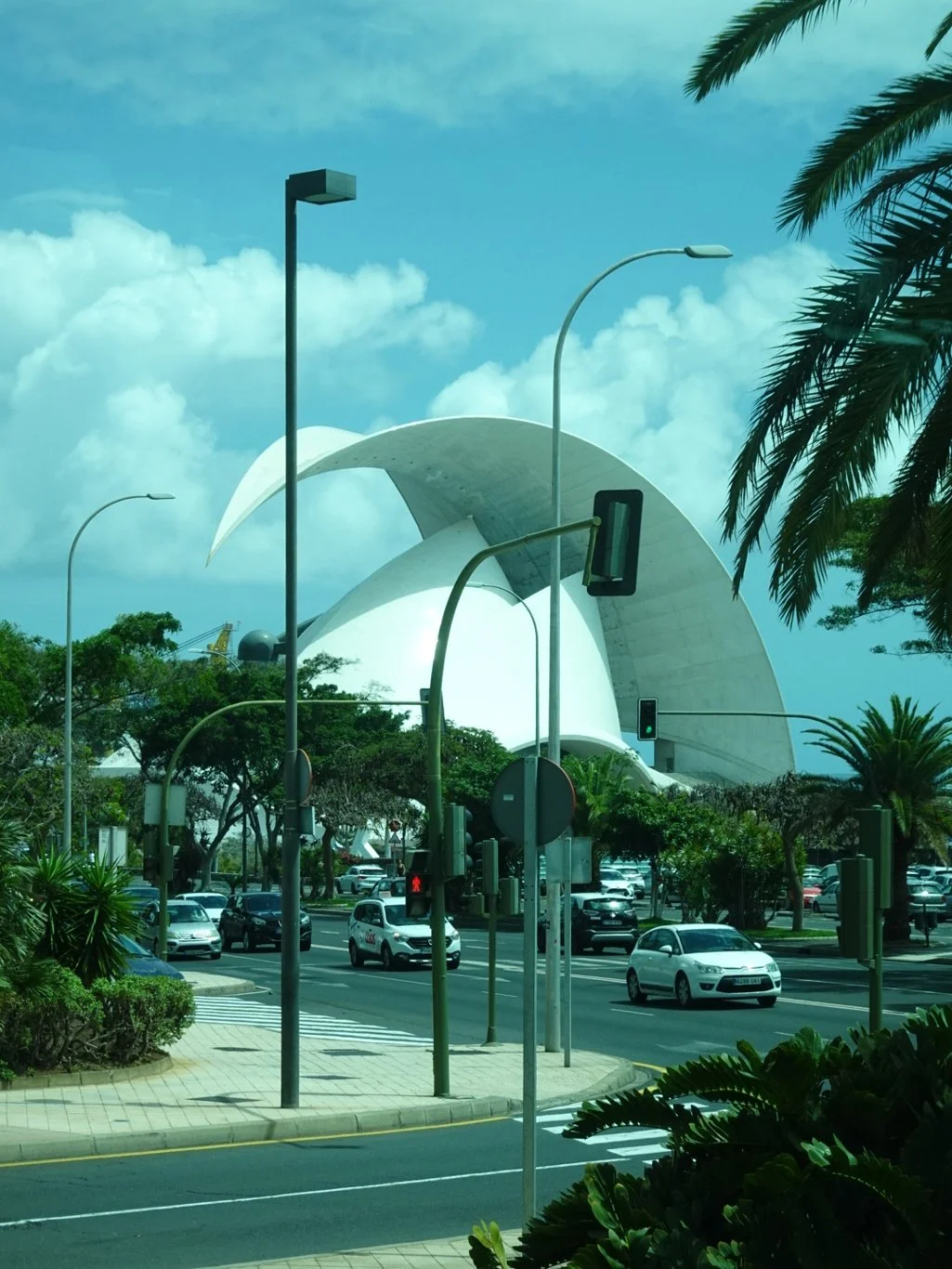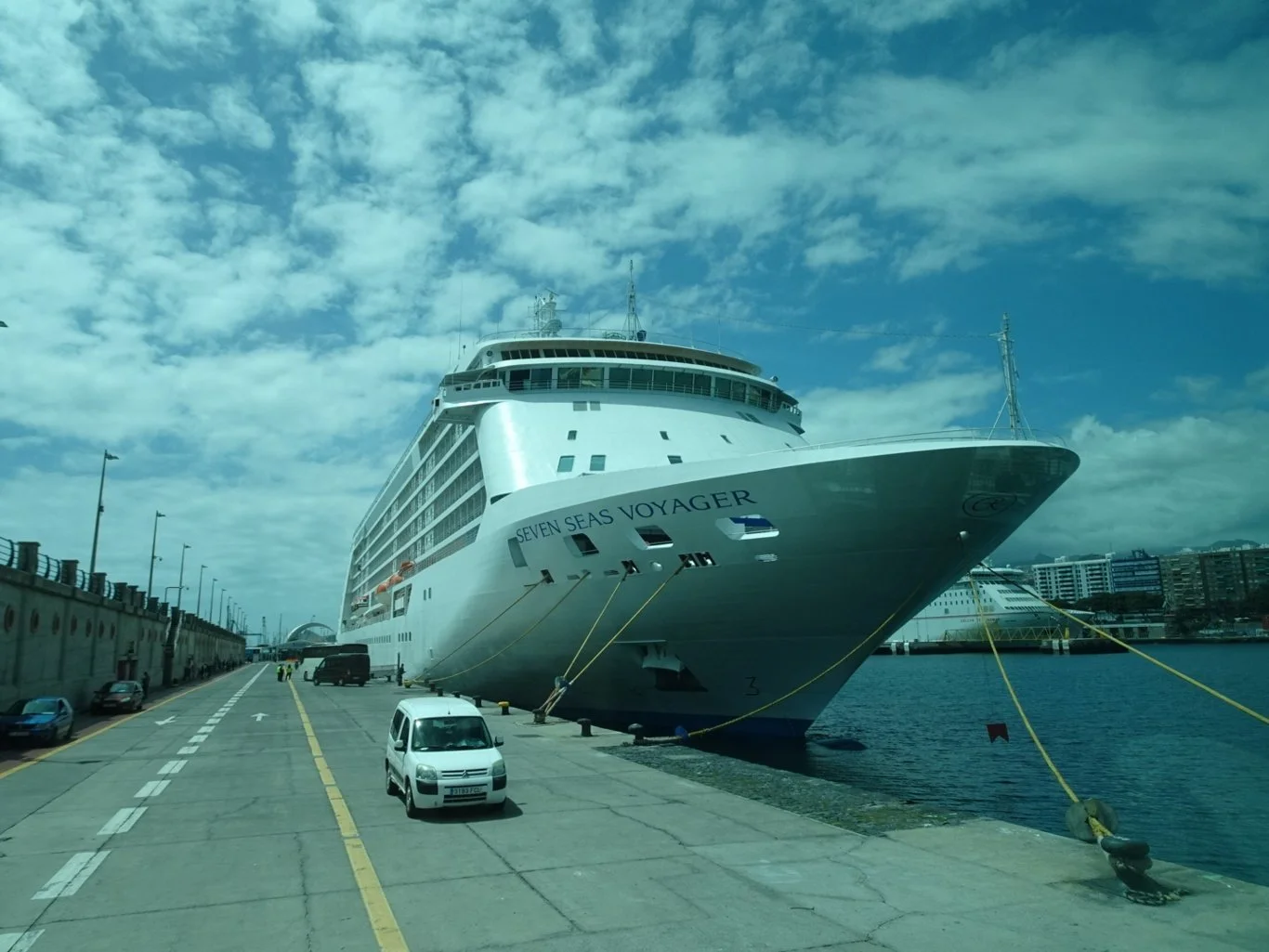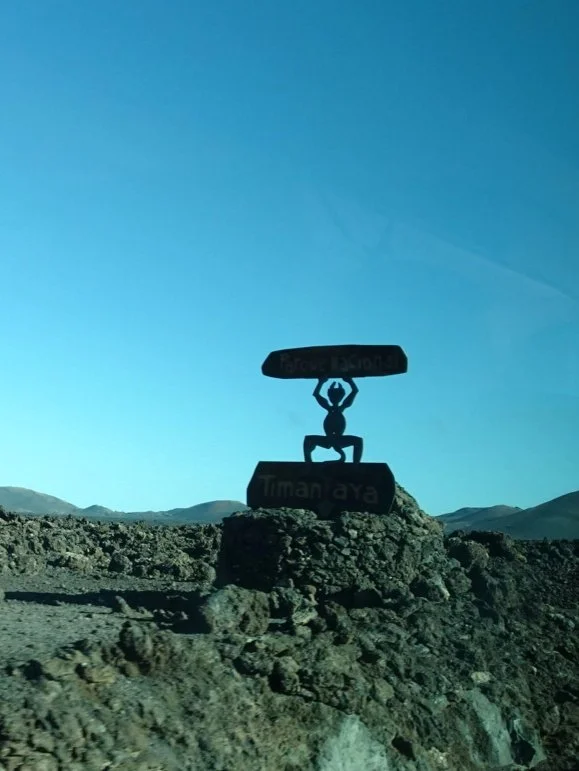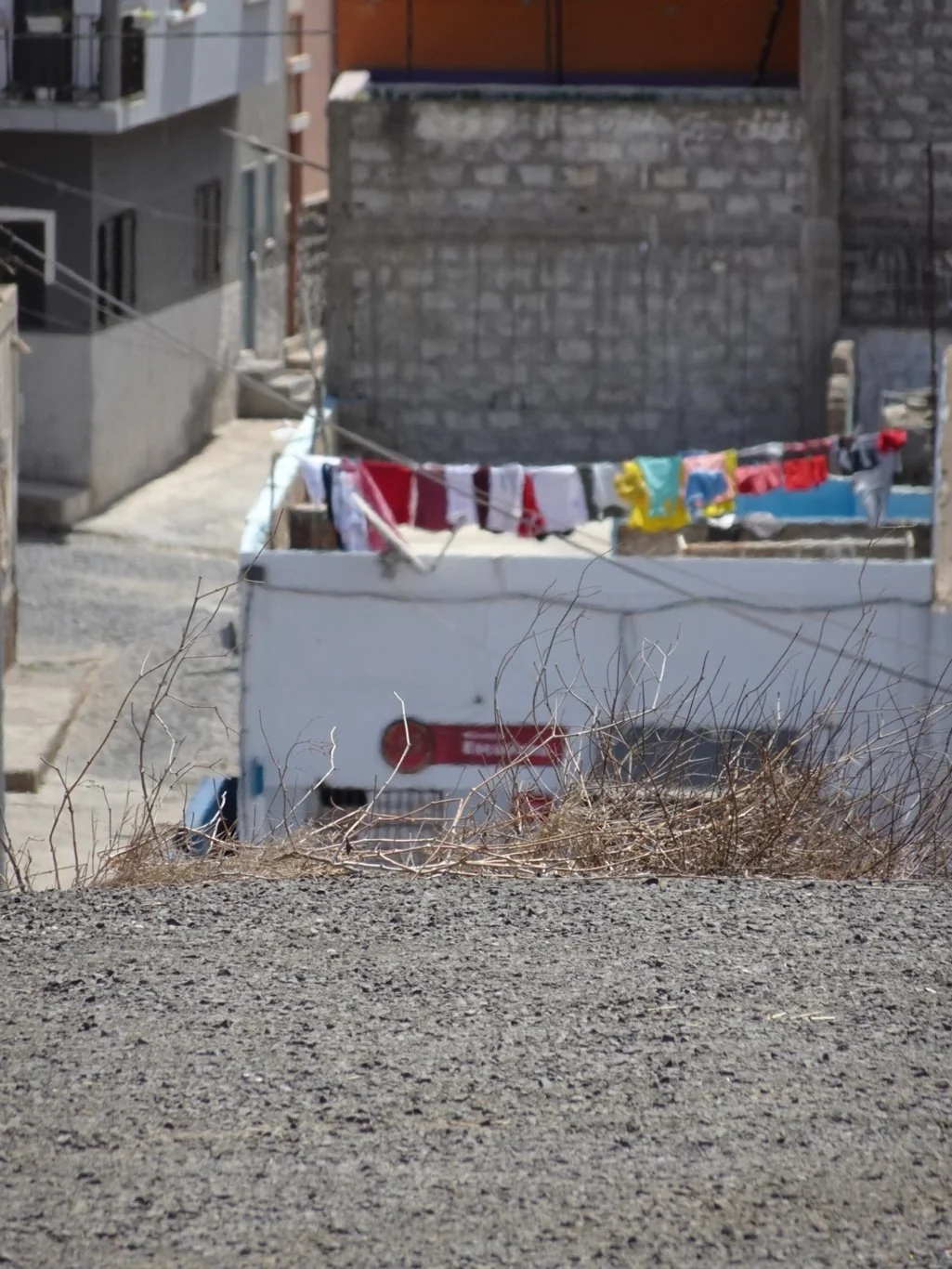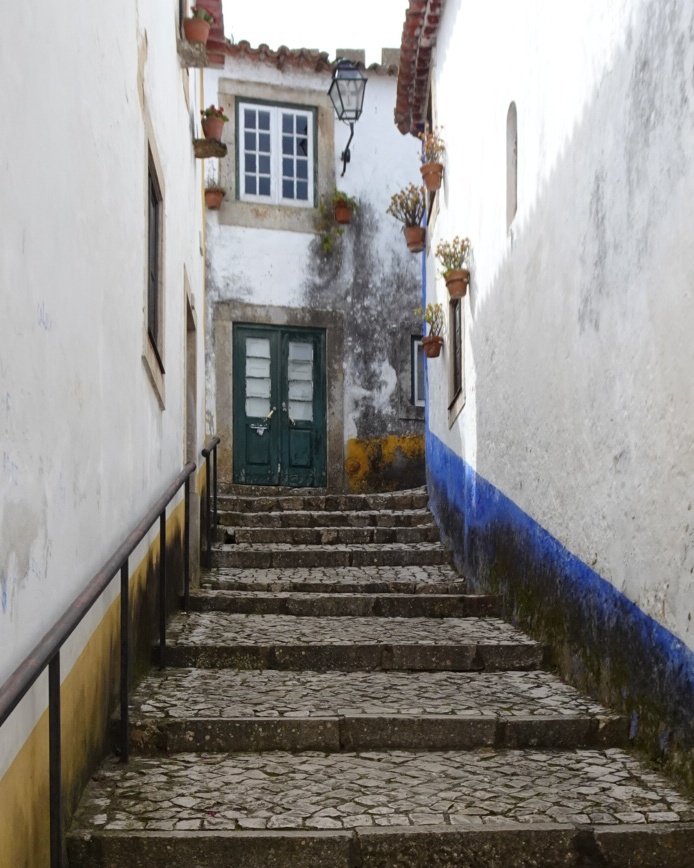Compare and contrast
We arrived in Santa Cruz de Tenerife this morning.
It's our first time in Tenerife; a place where friends come on holiday regularly, usually for a bit of winter sunshine. We didn't know what to expect beyond beach resorts and arriving in port this morning alongside the huge Armas ferry in a bustling seaport, we had to wait until we went out on tour to get the wider view
We drove from the port past the new(ish) Opera House, which was given as a reason for Santa de la Cruz's nickname as “the Sydney of the Atlantic”. Hmmm. Well, had it not been for a couple of derelict oil rigs brought for repair from somewhere in West Africa, then that might be somewhere near apt, but as it was, sad to say it was not really anywhere near!
Out on the motorway then, heading somewhere west, along the north coast of the island.
All around us were green hillsides with clusters of houses. In stark contrast to Sao Vicente, our previous stop, the landscape here was lush with hardly a patch of bare earth to be seen. The Canary Islands are volcanic too, formed in a similar manner to Cape Verde, but Tenerife is a relatively young island and has not been eroded as much. This means it's altogether higher and clouds form around the mountains, resulting in more rain. (I think I learned as much meteorology as anything else this morning!) The volcano, Mount Teide, seemed to be ever present.
We drove out of the city and headed for the northwest coast and our first stop, a cafe high above a small town built out into the sea on a rounded headland.
This illustrated one of our guide, Ankor's explanations about the formation of the island. He'd outlined to us how the lava flows here and there would fall down the steep hillsides and into the sea, where they would cool and form a rounded extension to the land.
The cafe was somewhere close to the #5 on the map and we were gazing down at the highlight of our morning, the small town of Garachico. Our driver's next task was to get us down there, by means of a few hairpin bends.
We marvelled at the way the houses were perched on these steep hillsides, some in the most precarious positions. Many of them here were surrounded by banana plantations. Ankor explained that electric cars aren't so popular here because the nature of these roads requires so much battery power.
Safely down, we jumped off the bus ready to go. But our route to the right of this boundary wall was closed. The pathway along there, right by the sea, had been damaged in recent storms. Not the first time, we were told, for this headland gets a battering from the powerful waves fairly frequently.
So we took a different route, Ankor's expert guiding skills steering us well clear of other tour groups the whole time. Through pretty, well maintained streets, we went back towards the headland again so we could see something we'd heard about earlier.
Because of the nature of the sea here, it was always unsafe to swim in the open water. The town constructed a series of seawater pools then, fed by the tide and of varying depths and sizes. Popular with families, who could now enjoy the water more safely, these too had been closed following the recent storms.
Around the next corner, we stopped at the castle, which I don't recall as being quite as wonky as my photo suggests!
From here we had a good view of the old banana pier, now disused and a mere reminder of when there was a lively export trade from here.
Turning left and back into the town, we walked amongst the homes built by wealthy people, for this has always been a prosperous community. Some had interesting window styles with similar Moorish characteristics to those in Andalucia.
A small sunken garden just off a pretty square was all that remained of the old town gate.
It was lovely wandering around these quiet streets in the sunshine, though after two fairly wobbly sea days I found myself with “sea legs” at times. It's a strange feeling!
I'm not sure how many of these homes are permanent residences and how many are holiday apartments, for Ankor had told us of the same property issues as we have at home. Comparatively low salaries here mean that local people find it difficult to compete with wealthier buyers looking for holiday lets for investment purposes.
In the tree lined square, we stood for a while and looked around; at the boutique hotel and the beautiful houses around us.
Clearly a dilemma, but one on which we didn't need to dwell today. I admired the lovely “bandstand”, now a cafe doing a brisk business on a sunny morning.
With time to gaze up at the church tower, I spotted some interesting details on the clock too but couldn't get my little camera to zoom in well enough at this angle!
I did, however manage to snap the sign on the rather dark and forbidding mansion behind me. Built completely of basalt, the compressed volcanic stone, this was a clear expression of wealth.
It was in high contrast to the neighbours, who could only afford the material for their entrance, their window frames or their chimney.
Off we went then, from the lovely Garachico, through the banana and potato plantations, past one or two vineyards and on to our next stop.
A half hour drive brought us to Puerto de la Cruz, a very different town indeed.
Here too, the waves were powerful enough to make swimming difficult and a few families were looking rather uncomfortable sitting on pretty large black stones on the “beach” watching the novice surfers in the waves beyond the breakwater. Some picked their way to paddle a little, but it looked pretty tricky to me, who would fear a turned ankle!
We had an hour here to explore, so walked along the well maintained and immaculately presented promenade.
The Tapas menu completely in German revealed who their main customer target is.
The whole way along, between us and the seashore was a closed garden area, with ticket offices every so often. Just like the bathing pools at Garachico, this area had been created for families to enjoy the seaside without the danger of being in those powerful waves.
With daily passes on sale for 15 Euros each per adult, it wasn't worth our purchasing a ticket to take a look so like naughty children, we peered through the fence!
Before long, it was time to make our way back, so we walked along “the other side” in the shade, peeking in the shops and the hotels along this stretch of the Promenade. It all seemed pretty nice and was clearly a popular resort.
Half an hour's drive back on the motorway then, and we were nearly home. I snapped another picture as we passed the opera house. Maybe I'll get one without a lamppost this time? Hah!! No chance!
There in amidst the ferries and the local ships was our Voyager!








